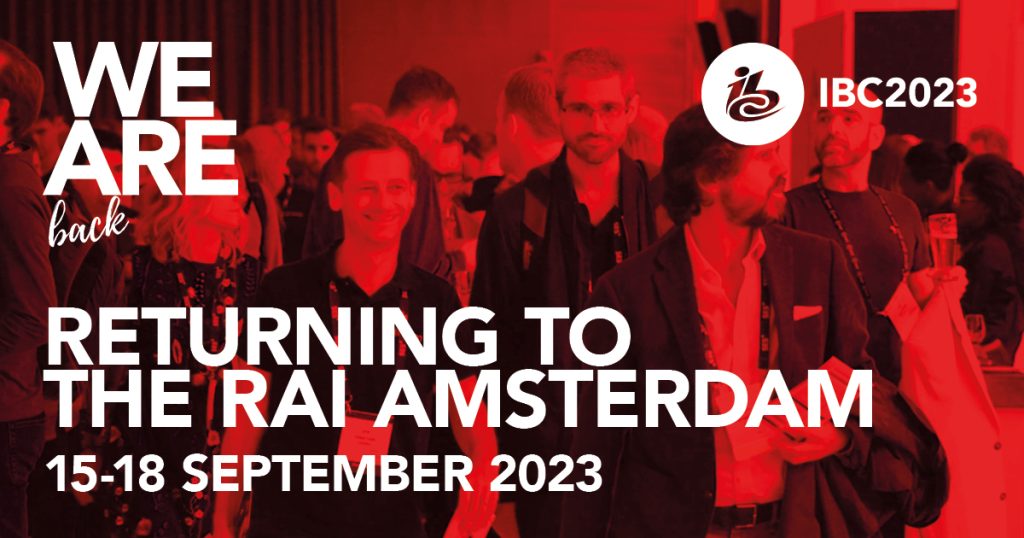IBC2023
The International Broadcasting Convention is a cornerstone event in the world of broadcasting and media technology. IBC2023 was no exception, buzzing with innovation as companies from around the globe showcased their latest advancements. Among the participants, our team from Dexor, in collaboration with the University of Applied Sciences Anhalt, was eager to demonstrate the capabilities of our groundbreaking RMDT protocol.

Our Booth at IBC2023

Visitors to our booth are greeted with a setup that, upon initial observation, might seem straightforward: one sender and three receivers connected over a network emulator. Each host beside the emulator is equipped with a monitor. As the demonstrations progress, the true prowess of our technology becomes unmistakably clear.
UDP Transmission
The sender transmits data over UDP (User Datagram Protocol) to the destinations. In an unblemished network with no packet losses or added latency, the quality of the 4K video stream is pristine, mirroring the experience of running on a local host. Yet, when we introduce conditions typical of intercontinental links, such as a 150 ms round-trip time and 0.2% packet loss ratio, the video quality takes a hit, displaying damaged frames and occasionally omitting some entirely.
TCP Transmission
In a similar vein, TCP transmission operates flawlessly in a clear network. However, when faced with the same impairments, the video playback grinds to a halt, rendering the stream nearly unwatchable. While the delay and losses might vary from connection to connection, the outcome is consistently the same: a compromised streaming experience.
RMDT Protocol
This is where our technology truly stands out. Even in the face of network impairments like 150 ms RTT and 0.2% PLR, or even when the losses are ramped up to 2% or 5%, the video quality remains steadfast. This demonstration underscores the resilience and superiority of our RMDT protocol, which effortlessly outclasses conventional transport protocols in both point-to-point and point-to-multipoint transmissions.
The impairments introduced during our demonstrations – 150 ms RTT and 0.2% PLR – are representative of typical conditions for intercontinental links. These conditions challenge traditional data transfer protocols, making them ideal for showcasing the robustness of RMDT. By further escalating the losses to 2%, we demonstrated RMDT’s resilience even under extreme conditions.
Bridging the Gap for Businesses at IBC2023

The diverse range of industries present at IBC2023 highlights the vast applications of broadcasting and media technology. Our demonstrations aim to understand the unique needs of these businesses and showcase how the RMDT protocol can seamlessly fit into their workflows.
- Broadcasters & Networks: Traditional broadcasters and networks are always looking for ways to improve their content delivery, reach, and engagement. RMDT offers solutions for more efficient content distribution, especially in areas with limited bandwidth or infrastructure.
- OTT & Streaming Platforms: Over-the-top (OTT) platforms and streaming services are booming. RMDT could provide these platforms with more efficient streaming capabilities, reducing buffering and enhancing user experience.
- Production & Post Production: The production and post-production sectors are always in need of efficient data transfer methods, especially when dealing with high-resolution content. RMDT speeds up the transfer of large video files, making the post-production process smoother.
- Content Owners & Distributors: Owners and distributors of content can benefit from RMDT by ensuring that their content reaches the end-users quickly, securely, and on time.
- Cinemas & Home Entertainment: With the increasing demand for high-quality content in cinemas and home entertainment systems, RMDT ensures that high-definition and 4K content is delivered seamlessly.
- VR & AR: Virtual Reality (VR) and Augmented Reality (AR) are data-intensive applications. RMDT could play a crucial role in ensuring that these experiences are smooth and immersive for the end-users.
- Telcos & ISPs: Telecommunication companies and Internet Service Providers can use RMDT to improve their network efficiency and offer better services to their customers.
- Cloud & Data Centers: With the increasing shift towards cloud-based solutions, RMDT ensures efficient data transfer between data centers and end-users.
- Sports: Live sports broadcasting requires real-time data transfer. RMDT ensures that there are no lags or delays, enhancing the viewer’s experience.
- News & Publishing: In the fast-paced world of news, timely delivery of content is crucial. RMDT can ensure that news agencies can deliver their content to viewers even faster.
Conclusion

IBC2023 was an unparalleled platform for innovators in broadcasting and media technology to showcase their advancements. Amidst this backdrop of innovation, Dexor presented a solution that has the potential to revolutionize many facets of the industry. The RMDT protocol, with its robustness and efficiency, can be a game-changer for a myriad of businesses present at IBC2023. The overwhelmingly positive feedback and interest from visitors solidified our confidence in RMDT’s potential. At Dexor, we’re not merely developing technology; we’re crafting solutions that can elevate the quality and reliability of services across the broadcasting and media spectrum.
You must be logged in to post a comment.